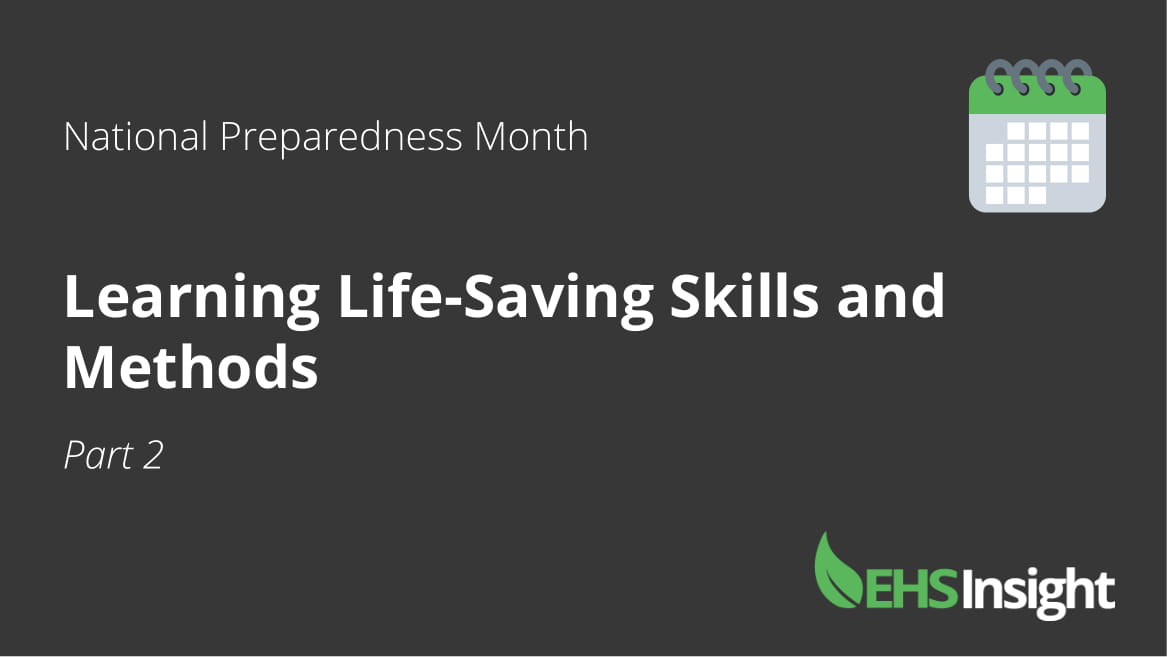In our first part of this four-part blog series, we discussed the importance of creating and practicing a plan to handle unexpected disasters. Part of every emergency plan should also include life-saving skills and methods that can give you and your team the best chance of survival during a threat.
Learning and teaching life-saving skills that can be used in the workplace is part of the corporate responsibility to your employees. You should want to arm each person with the tools, knowledge, and skills that allow them to feel confident that when a disaster occurs, they can do their part by taking control of the situation.
What Life-Saving Skills Should You Teach?
Disaster preparedness isn’t just about knowing how to respond when an incident occurs. It also includes knowing how to mitigate your risk of disaster, even when some measures are beyond your control.
You can’t predict where a tornado or hurricane will strike, or how high flood waters will rise, but you can take the right precautions that will limit potential impact to your company, its property, and its employees.
Reducing your risk starts with your people. Training them on life-saving skills and helping them understand how to reduce risk during an occurrence should be a priority in your organization. Informed employees are powerful employees.
Here are a few suggestions to include in your skills training:
CPR and First Aid
Disasters can often lead to injury, whether it’s a slip or fall trying to evacuate a building or smoke inhalation from a fire. While it might not make sense to train everyone in your organization on CPR and First Aid care, you should consider holding training classes for individuals who are interested or otherwise most likely to need it.
Emergency Communication
In an emergency, questions can lead to chaos. There’s a fear of not knowing what’s happening and a demand for immediate answers. Consider building a small team of emergency communication directors who are responsible for sending out texts and emails en masse, communicating via social media, or contacting emergency service personnel.
Knowing how to properly communicate in an emergency can give clarity to the situation and reduce the noise and chaos associated with emotions running high.
Handling Utilities
In some emergencies, it may be necessary to disarm your company’s utilities, such as gas, water, or power. Locating the shutoff points and knowing when a turnoff is necessary can help protect on-site employees as well as the surrounding community.
Disaster-Specific Training
Will your employees know what to do if someone becomes struck by lightning? Do they know how to escape a burning building without looking at the posted escape route? Do they know where to go in the event a disaster occurs?
Focusing on specific disasters can help them to connect what they learn during safety training to real-life scenarios and reinforce their knowledge and confidence.
Include Critical Skills Training in Your Safety Program
When you’re creating your annual training calendar, planning for disasters should be part of it. You can designate specific training days or modules to cover life-saving skills such as the ones mentioned above alongside safety drills and other related topics.
Emergencies can happen to anyone, even companies with a strong safety program in place. The more you can prepare your employees, the better your company as a whole can respond to the situation with a desirable outcome.
Watch for Part Three in our National Preparedness Month series as we explore insurance strategies and how to ensure you have the appropriate funds to keep your business afloat during emergencies.
